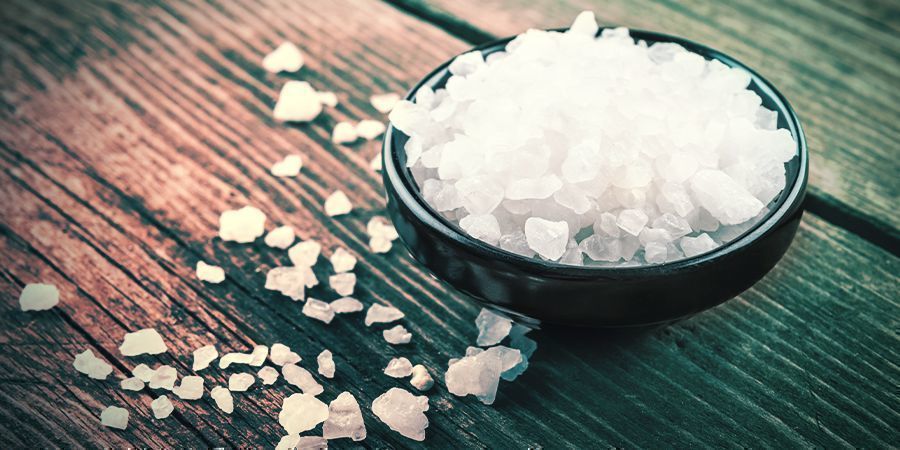The Importance Of Sulphur For Cannabis Plants
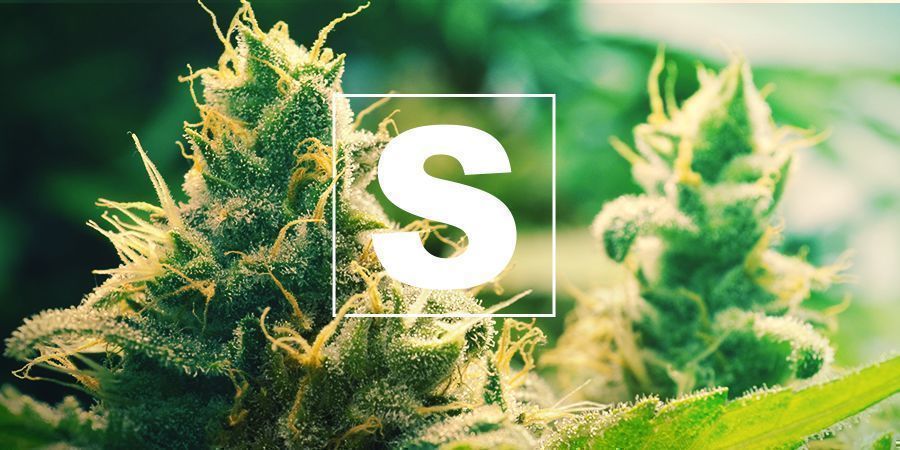
Sulphur is one of the top three secondary nutrients cannabis plants need to survive and thrive. Keep reading to learn more about sulphur and what it does for weed.
Cannabis plants might not need nearly as much sulphur as they do nitrogen, potassium, or phosphorus. However, a lack or excess of sulphur in your fertiliser or growing medium could affect your plants' root health, chlorophyll production, metabolism, and more. In what follows, we'll teach you all there is to know about the important role of sulphur in cannabis plants.
What Is Sulphur?
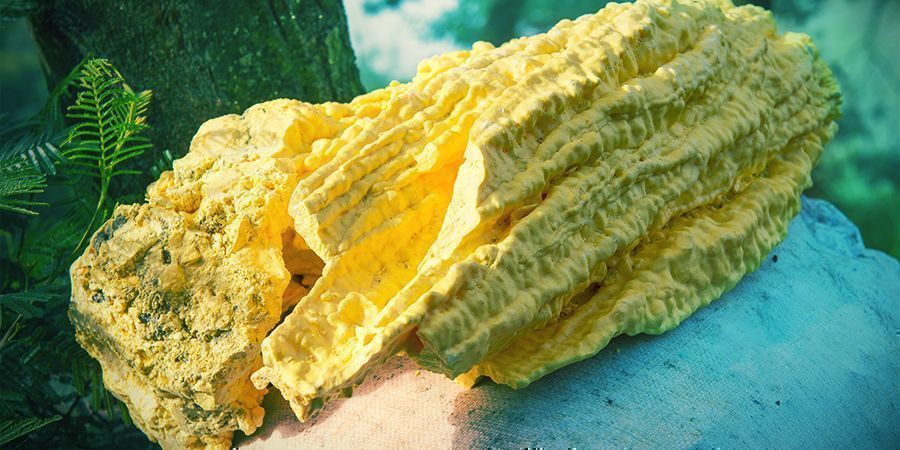
Sulphur, along with magnesium (Mg) and calcium (Ca), is considered a secondary cannabis nutrient. Like the primary nutrients nitrogen (N), phosphorus (P), and potassium (K), secondary nutrients are classified as macronutrients since plants need them in relatively large quantities. Both animals and plants need sulphur in relative abundance. Even if cannabis doesn't require as much of it when compared to other elements, sulphur has many important functions. It aids in the production of chlorophyll, is a component of proteins and amino acids, boosts plant resistance, and more!
In nature, sulphur is available in its pure elemental form as a yellow mineral, but it’s also found in sulphates and sulphites. The elemental form of sulphur, however, isn’t water-soluble, and plants cannot absorb it through their roots. In the soil, sulphur is usually found as sulphate, which is the only form of sulphur that can be utilised by plants. Elemental sulphur has to be metabolised into sulphate by microorganisms, and that can take a long time. Elemental sulphur, therefore, is utilised as a long-term fertiliser, while the sulphate (SO₄) form of sulphur (which is found in commercial cannabis nutrients) is available to plants right away.
The Sulphur Cycle
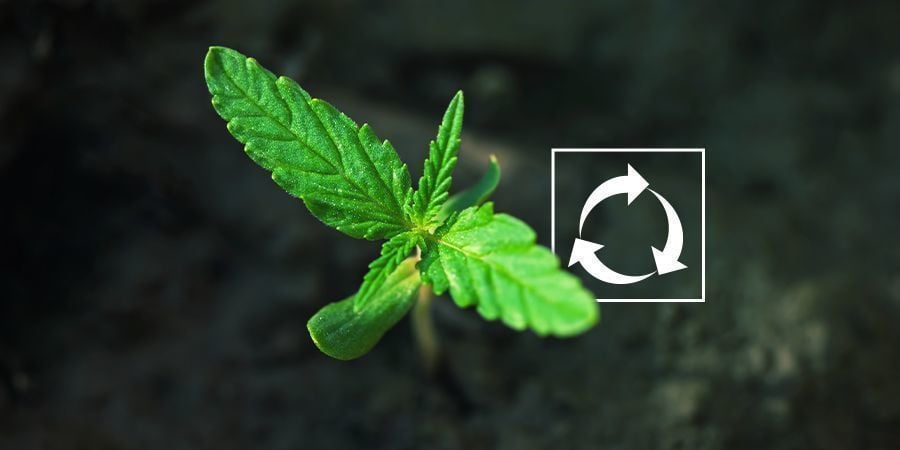
Like some other elements, sulphur cyclically replenishes itself within the ecosystem. It begins with weathering rocks releasing stored sulphur into the air, where it is then converted into sulphate (SO₄). Sulphate is then taken up by plants and microorganisms, which convert it into organic forms that are eaten by animals. As organisms die and decompose, some of the sulphur is again released as sulphate, which is taken up by microorganisms.
Sulphur is also released from volcanic eruptions and evaporating water. It returns back to earth with rainfall, and, through rivers and streams, finds its way into the oceans. The element is then moved to land by the geologic uplifting of ocean sediment.
Why Do Cannabis Plants Need Sulphur?
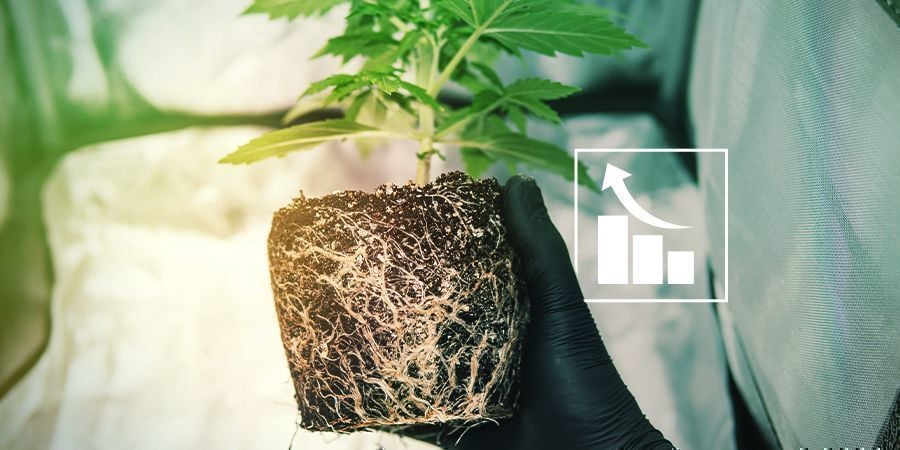
The element plays many different roles in the growth of your cannabis plant. These include:
- Promotion of root growth.
- Encouragement of chlorophyll production and distribution.
- Important component of proteins and amino acids.
- Enhancement of plant metabolism.
- Promotion of overall growth and plant health.
- Support of the water and nutrient absorption process.
Many of these functions are critical for the vegetative growing stage of cannabis, but sulphur is also needed in the seedling and flowering stages as well.
Cannabis, Sulphur, and pH
When growing cannabis, sulphur is available upwards from a pH value of 5.5, although optimal absorption happens at 6.0 pH. This applies to both soil and hydroponics. If the pH of the growing medium drops below 5.5, signs of sulphur deficiency will occur.
Early Stage Needs
If sulphur isn’t available, or cannot be accessed, during vegetative growth, plants will lack vigour and vitality, growing fewer branches as a result. Severe growth problems are also likely to occur, as the element is important for photosynthesis and other critical functions.
Flowering Needs
During flowering, a lack of the mineral will result in a greatly diminished final product. Bud growth will suffer and poor yields will be the result. If there is a serious sulphur deficiency during the flowering stage, the flowers themselves might even die.
Sulphur in Chemical vs Organic Fertiliser
In commercial cannabis fertilisers, sulphur is typically found in its sulphate form readily available to plants. However, the organic cannabis farmer has plenty of options available to provide the mineral to their plants. Some of the best natural sources of sulphur are:
- Epsom salt, which contains both magnesium and sulphur.
- Mineral-rich soils found in nature, particularly volcanic soils.
- Gypsum (calcium sulphate), which is rich in sulphur, calcium, and other elements.
- Potassium sulphate, which provides both potassium and sulphur.
- Animal manures and organic matter, which are rich in organic sulphur.
Sulphur Deficiency
Sulphur is considered a partially mobile nutrient, meaning it moves slowly around a plant. Typically, symptoms of a sulphur deficiency manifest in the newer leaves first. Unfortunately, detecting sulphur deficiencies can be tricky, as the symptoms closely resemble those of a nitrogen deficiency—particularly yellowing of the fan leaves (chlorosis). Most cannabis growers won’t run into sulphur deficiencies due to a lack of nutrients in their fertiliser; instead, it’s usually down to nutrient lockout or pH-related issues.
Sulphur Toxicity
Like any nutrient, providing your plant with the right amount of sulphur is all about balance. While too little sulphur can restrict your plant's growth and thereby reduce the size and quality of its yield, too much sulphur can be just as detrimental. Though an uncommon occurrence, sulphur toxicity can itself lead to nutrient lockout and various other issues with plant health and vitality. A common sign of sulphur toxicity is brown or dark green leaves with burnt or curled tips.
Sulphur: A vital macronutrient for healthy cannabis plants
While it might not be the star ingredient in veg and bloom fertilisers, sulphur is an important secondary nutrient for cannabis plants. In this article, we hope to have taught you the vital role sulphur plays in plant health, as well as some tips on how to properly administer sulphur when fertilising your weed plants.









 United States
United States

